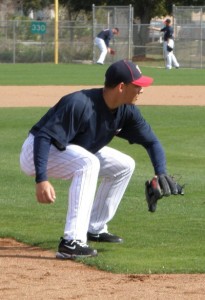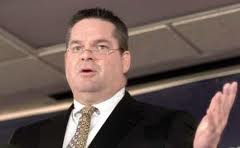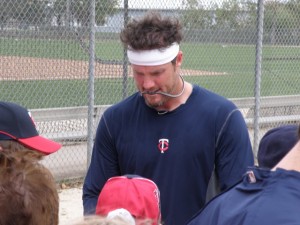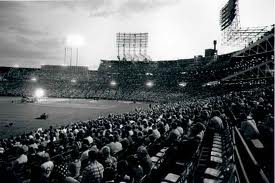If you’ve been reading anything about the Twins’ offseason, you may have heard this already… The Twins are going to need some new relief pitchers to fill out their bullpen. Shocking, I know.
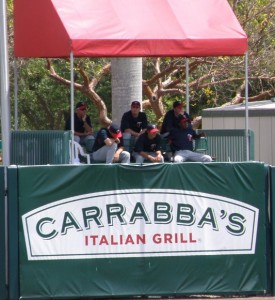
Truth is, the thing I find more surprising than anything else is that so many people seem to care so much about who’s going to make up the bullpen on Opening Day. I’m not ignorant of the fact that the Twins are losing half of the strong bullpen they finished the 2010 season with. Jesse Crain and Matt Guerrier are already members of other teams, with Brian Fuentes, Jon Rauch, Randy Flores and Ron Mahay likely to follow.
So with all of the uncertainty about who will be keeping bullpen coach Rick Stelmaszek company this season, why am I surprised that so many people are devoting so much time to fretting over the makeup of the Twins’ relief corps? It’s simple really.
It matters to me that the Twins appear at least one top-of-the-rotation pitcher short at the moment. Going in to the season with the current five young starting pitchers, backed up only by unproven younger options, and relying on being able to trade for a top starter at mid season is a risky proposition. It may work out. It may not. But it matters and if they don’t have someone like Carl Pavano in the rotation that can consistently go deep in to games and give the bullpen a rest, then it matters even more.
It matters to me that the Twins are apparently comfortable with a defensive outfield that is, to be kind, less than swift. It baffles me a bit that the Twins looked at the way Target Field played in its inaugural season and recognized that they needed more contact hitters with speed on offense to take advantage of the field’s outfield gaps that tend to kill power but favor gap hitters… but didn’t also arrive at the conclusion that they should upgrade the defense with the addition of at least one more outfielder with the range to prevent opposing hitters from benefiting quite so readily from this particular stadium quirk.
It matters to me that the Twins will once again start the season with a new middle infield combination. I happen to be more of an optimist with regard to Alexi Casilla than many are and, while I’m on record as having preferred that the Twins hang on to JJ Hardy, I believe there’s been far more gnashing of teeth over his departure than is warranted. I suspect Tsuyoshi Nishioka will do just fine offensively and defensively… and is much more likely to bring stability to the middle infield for the next few seasons than either Hardy or Orlando Hudson would have. But regardless, yes, this new middle infield combination matters to me.
It WOULD matter to me if the Twins had nobody returning with a history of providing adequate performance at the back end of the bullpen. But while they won’t start the season with as many proven late inning options as they had at the end of 2010, the combination of Joe Nathan, Matt Capps and (to a somewhat lesser degree) Jose Mijares has demonstrated in the past that they are capable of getting a few outs toward the end of a ballgame. Even though Nathan’s healthy return to pre-injury status is not guaranteed and that, as is the case with Lexi, I’m a bigger fan of Matt Capps than most of Twinsville seems to be, I can’t honestly say I’d be a whole lot more comfortable with late inning options if any of the departing arms were still around. Some people act like Crain, Rauch, Guerrier and Fuentes never coughed up a game in their careers.
There are four open spots in the 2011 bullpen. All are long relief and middle inning positions. Who will fill those spots? I’m sorry… but I can do no better than turn to the wisdom of Bill Murray for a response. In his first leading role in the 1979 “classic” film, Meatballs, Murray captured my feelings perfectly when he said (repeatedly)… “It just doesn’t matter!… it just doesn’t matter!…”.
Will Glen Perkins or Alex Burnett or Jeff Manship or Rob Delaney be the long relief options… or will one of the current five starting pitchers get bumped to the pen if Pavano re-signs? Who cares? It just doesn’t matter! They’re going to be used when the starting pitcher gets shelled in the first three innings of a game the Twins are highly unlikely to come back and win anyway.
Who’s going to bridge the gap between a starting pitcher who labors through four or five innings and the set-up guys during a game that the offense is managing to keep close? Will it be Pat Neshek, Scott Diamond, Jim Hoey, or some free agent yet to be signed? I don’t know and it just doesn’t matter! Regardless of who fills those spots, I can guarantee you that sometimes they are going to pitch well and sometimes they won’t. Sometimes they will get lucky and sometimes they won’t. If they pitch poorly or are unlucky too often early in the season, one of the other candidates will be plugged in and get his shot. But, as Ed Thoma pointed out this week on his Baseball Outsider blog, it’s not like Gardy and Rick Anderson have never had to build a bullpen before.
Still… since so many people see the bullpen as an issue to get riled up about (and because I’m devoting 1,000 words or so to the topic here), I feel compelled to come up with at least one suggestion for the Twins to consider. So here it is.
Hiroyuki Kobayashi
Never heard of him? That’s OK.

Kobayashi is a Japanese free agent (which means he’s available to sign without having to go through the posting process), was a team mate of Nishioka’s with the Chiba Lotte Marines and does have some international experience as a member of the Japanese national team. After a few mediocre seasons as a starting pitcher under the Marines’ former manager, Bobby Valentine, Kobayashi was moved by Valentine’s replacement in to the closer role in 2010 and apparently performed well enough to help Chiba win the Japanese championship.
Reports are that he doesn’t throw extremely hard (fastball runs 89-91 mph) but mixes in several other pitches effectively enough to miss bats consistently (striking out around 8 hitters per 9 nine innings in his career).
Some people have lamented the Twins not being aggressive about signing Hideki Okajima or some other Japenese relief pitcher to perhaps minimize the cultural shock Nishioka is inevitably going to face next season. What better way to do that than to bring in one of his team mates?

That’s enough from me today. Now we can turn our attention to more important stuff… I’m not sure what that might be, but there has to be SOMETHING more important than finding out who gets the duty of carrying the backpack of goodies to the bullpen this season.
– JC











